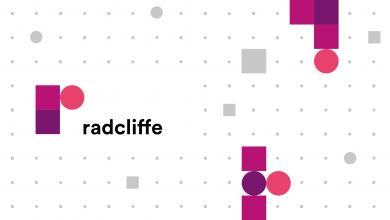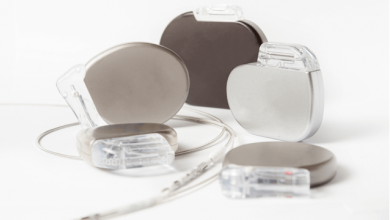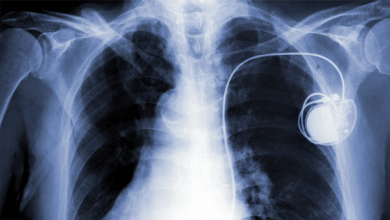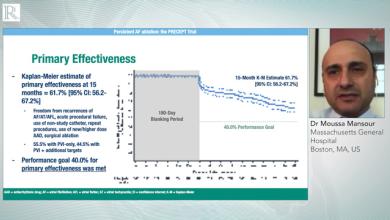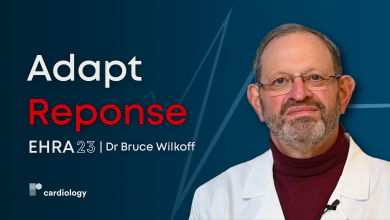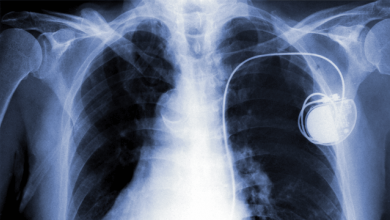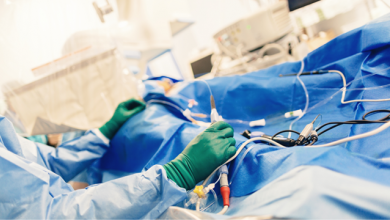Search results
Author(s):
Horst Sievert
Added:
6 years ago
In this video, Dr Horst Sievert discusses his measure of procedural/follow-up success.
View more
Author(s):
Tze-Fan Chao
,
Chern-En Chiang
,
Shih-Ann Chen
Added:
3 years ago
Burden of Atrial Fibrillation
Atrial fibrillation (AF) is the most common sustained arrhythmia in clinical practice, accounting for approximately one-third of hospitalisations for cardiac rhythm disturbances.1 Between 1980 and 2000, the age-adjusted incidence of AF significantly increased from 3.04 to 3.68 per 1,000 person-years in the US.2 The prevalence of AF was lower among African Americans…
View more
Author(s):
Niraj Varma
,
Renato Pietro Ricci
,
Loredana Morichelli
Added:
3 years ago
Monitoring after implant of patients with cardiac implantable electronic devices (CIED) forms a part of both device and patient care, and is the responsibility of the implanting centre. Monitoring is challenged by the increasing number and technical complexity of implanted devices coupled with the increasing clinical complexity of the patient population. Current practice is based on quarterly to…
View more
Author(s):
Haran Burri
Added:
3 years ago
Patients implanted with a pacemaker (PM) or implantable cardioverter defibrillator (ICD) require regular follow-ups to control the proper function of the implanted device. These technical checks have traditionally been performed manually in-office using a dedicated device programmer. In 1971, transtelephonic monitoring was introduced to remotely follow-up basic parameters (such as battery status…
View more
Author(s):
Shohreh Honarbakhsh
,
Simon Sporton
,
Christopher Monkhouse
,
et al
Added:
2 years ago
Author(s):
Moussa Mansour
Added:
3 years ago
Dr Moussa Mansour (Massachusetts General Hospital, Boston, MA, US) shares updates from the PRECEPT Study.
The objective of the Persistent atrial fibrillation ablation with contact force sensing catheter: The prospective multicenter PRECEPT Trial is to evaluate the safety and effectiveness of catheter ablation of PsAF using a porous tip contact force (CF)-sensing catheter.
Questions:
1.What are…
View more
Author(s):
Bruce Wilkoff
Added:
1 year ago
EHRA 23– Dr Bruce Wilkoff (Cleveland Clinic, US) joins us on-site to outline the findings of the AdaptResponse randomized study (NCT02205359).
In AdaptResponse, investigators studied the hypothesis that cardiac resynchronization therapy (CRT) devices which utilised AdaptivCRT® (aCRT) algorithm (Medtronic) had better prognosis in patients with normal atrioventricular conduction and left bundle…
View more
Author(s):
Haran Burri
Added:
3 years ago
Remote follow-up and monitoring of patients implanted with cardiac implantable electronic devices (CIEDs) has been introduced over a decade ago, and is now indicated according to European (class IIa indication1) and American (class I indication2) guidelines. There have been high expectations that this technology will improve patient outcome, as it significantly shortens response to actionable…
View more
Author(s):
Tauseef Akhtar
,
Ronald Berger
,
Joseph E Marine
,
et al
Added:
3 years ago
AF is a common and clinically impactful arrhythmia. Given both the association of AF with aging and the increasing number of elderly people in the general population, it follows that many AF patients are of advanced age. The management of AF in the geriatric population is associated with several challenges, including multiple comorbidities, increased toxicity of antiarrhythmic drugs (AAD), an…
View more
Author(s):
Jackson J Liang
,
Pasquale Santangeli
,
David J Callans
Added:
3 years ago
Ventricular tachycardia (VT) is a significant cause of morbidity and mortality in patients with structural heart disease (SHD). While implantable cardioverter-defibrillators (ICDs) have been shown to be effective in preventing sudden death due to ventricular arrhythmias, they are not able to prevent recurrent VT episodes. Antiarrhythmic drugs (AADs) have some demonstrated efficacy in preventing…
View more








